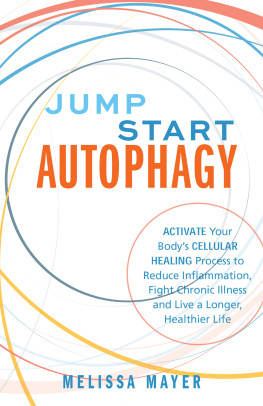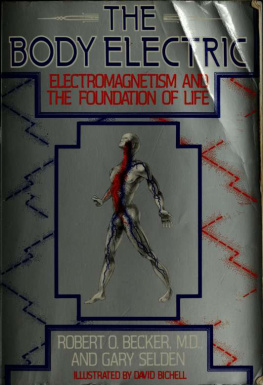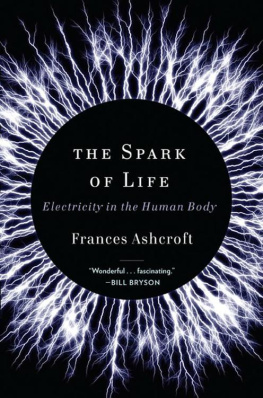
Copyright 2023 by Sally Adee
Cover design by Terri Sirma
Cover image Login/Shutterstock
Cover copyright 2023 by Hachette Book Group, Inc.
frog Qbertlegion/Shutterstock
Hachette Book Group supports the right to free expression and the value of copyright. The purpose of copyright is to encourage writers and artists to produce the creative works that enrich our culture.
The scanning, uploading, and distribution of this book without permission is a theft of the authors intellectual property. If you would like permission to use material from the book (other than for review purposes), please contact permissions@hbgusa.com. Thank you for your support of the authors rights.
Hachette Books
Hachette Book Group
1290 Avenue of the Americas
New York, NY 10104
HachetteBooks.com
Twitter.com/HachetteBooks
Instagram.com/HachetteBooks
First Edition: February 2023
Published by Hachette Books, an imprint of Perseus Books, LLC, a subsidiary of Hachette Book Group, Inc. The Hachette Books name and logo is a trademark of the Hachette Book Group.
The Hachette Speakers Bureau provides a wide range of authors for speaking events. To find out more, go to hachettespeakersbureau.com or email HachetteSpeakers@hbgusa.com.
Books by Hachette Books may be purchased in bulk for business, educational, or promotional use. For information, please contact your local bookseller or Hachette Book Group Special Markets Department at: special.markets@hbgusa.com.
The publisher is not responsible for websites (or their content) that are not owned by the publisher.
Library of Congress Control Number: 2022951646
ISBNs: 978-0-306-82662-7 (hardcover), 978-0-306-82664-1 (ebook)
E3-20230127-JV-NF-ORI
For Ann
I was back at the checkpoint. The traffic moved as normal. Bored-looking soldiers waved through civilians on foot, dusty cars, and rickety trucks full of livestock and produce.
Then the Humvee in front of the gate blew up.
Out of the eye-searing blast, I made out the figure of a man running at me, full-speed. He was wearing an explosive vest. I shot him.
A flash of movement to my left revealed a sniper who had just begun to raise his gun. I got him too.
Now a mass of peoplemaybe seven?breached the checkpoint, all of them with machine guns. I scanned the group to determine who was closest, who I needed to take out first.
Three more men darted across the roof of a low building that overlooked the checkpoint. I saw them anyway. Bang-bang-bang.
There werent any more after that, only the quiet whistle of the desert wind. Still I waited, calm and alert, scanning the horizon.
The lights came up and the tech walked in.
Whats wrong? I asked.
Nothing, the tech said, surprised. Youre done.
What do you mean, done? I was disappointed. I couldnt have been inside the simulation for more than three minutes. Can I keep going?
No, its over.
How many did I get? I asked, as I surrendered my rifle and headgear, cutting off the flow of electricity that had been coursing through my brain.
She shrugged. All of them.
I was in a gray office park in southern California, nowhere near any checkpoint in any conflict. In my hands was an M4 close-combat rifle modified to fire CO2 cartridges, and while those can pack a bit of a kick, they dont do any damage. The people I was firing at were not real; they had been dreamed up by the programmers of a wall-sized army training simulation.
What was real was the electrical stimulation device on my head. I had signed up to have a few milliamps from a 9-volt battery sent through my skull to test if it would make me a better shot. The scientists hypothesis was that the electrical current would recalibrate a different kind of electricity in my brain: the naturally occurring bioelectric signals that the nervous system relies on to communicate. By overpowering these delicate natural streams with an artificial shock to the executive part of my brain, they hoped to wrench my mind into a state of alertness and concentrationenough to turn this desk-slumping journalist into a battle-ready assassin.
Back in 2011, I was a writer and editor for New Scientist. It was a dream job for which I had recently moved across the ocean. Before that, I reported on microchips and neurotech for a US-based engineering magazine called IEEE Spectrum, an inevitable position for someone with my childhood. My dad is a former radio engineer who filled the basement of our family home with intriguing contraptionscircuit boards, wires wrapped in candy colors, a soldering ironand a fairly comprehensive mid-twentieth-century back catalog of a science fiction magazine called Analog. Part of the reason I became a science writer was to watch the ideas from those old sci-fi stories undergo metamorphosis into real science.
That would also explain why I was obsessed from the moment I first caught wind of this mind-boggling military brain-stimulation experiment. I had seen this techniqueknown as transcranial direct current stimulation (tDCS)bubbling around the science press for a few years. Among other intriguing results, it seemed to improve everything from treatment-resistant depression to poor math skills. This flow of electricity, according to the scientists who wired me up, might alter the strength of connections between the neurons in my brain, making them more likely to fire in concert. That natural synchronization is the basis of all learning, and speeding it up with an electrical field would theoretically accelerate the rate at which I could learn a new skill (in this case, turning me into James Bond).
When I caught my first glimpse of this strange new use for electricity in 2009, it was the stuff of obscure medical trials and secret military projects. Today, the notion of wearing an electrical stimulator on your head isnt as foreign as it seemed back then; its certainly the kind of thing you can imagine someone in Silicon Valley doing for a little extra mental edge, alongside intermittent fasting or microdosing psilocybin.
But its not just about boosting your brainpower with a volt joltthere are many other ways electricity is being used to treat the ailments of body and mind. Take deep brain stimulation, a treatment of last resort for Parkinsons disease, in which two electrodes the size and shape of uncooked spaghetti are slid into the deepest parts of your brain to quiet the diseases destructive symptoms. In the wake of its fantastic success, scientists are testing the treatment on other ailments, including epilepsy, anxiety, obsessive-compulsive disorder, and obesity. Then theres the rise of electroceuticals: these rice-grain-sized electrical implants, clamped around nerves in the body, supposedly interrupt their signals, and in rat and pig trials, appeared to reverse diabetes,
So when I saw the opportunity to be a guinea pig in a US Defense Department project, of course I jumped at it, and I wasnt disappointed: my own experience with tDCS was transformative. Getting my neurons slapped around by an electric field instantly sharpened my ability to focus, and by the transitive property, my sharpshooting skills. It also felt incrediblelike someone had finally hit the off switch on all the distracting negative self-talk that had, until that moment, been the main provider of my minds elevator music. I was a convert, and I wanted to preach the positive power of electricity to anyone who would listen.
When my story detailing the experience was published in New Scientist, it went viral. The timing was perfect: in the early 2010s, Silicon Valley magical thinking was ascendant and everyone aspired to becoming a Soylent-drinking productivity goblin. Transhumanists were desperate for new ways to upgrade their sad meat bodies. Electricity was now poised to join the suite of tools that could help people override their fundamental human limitations. The article became a fixture on DIY tDCS forums where amateur neuroengineers traded circuit designs and equipment specs that would let them overclock their brains in their basements. Media coverage saw promise and peril: the producers of science podcast










